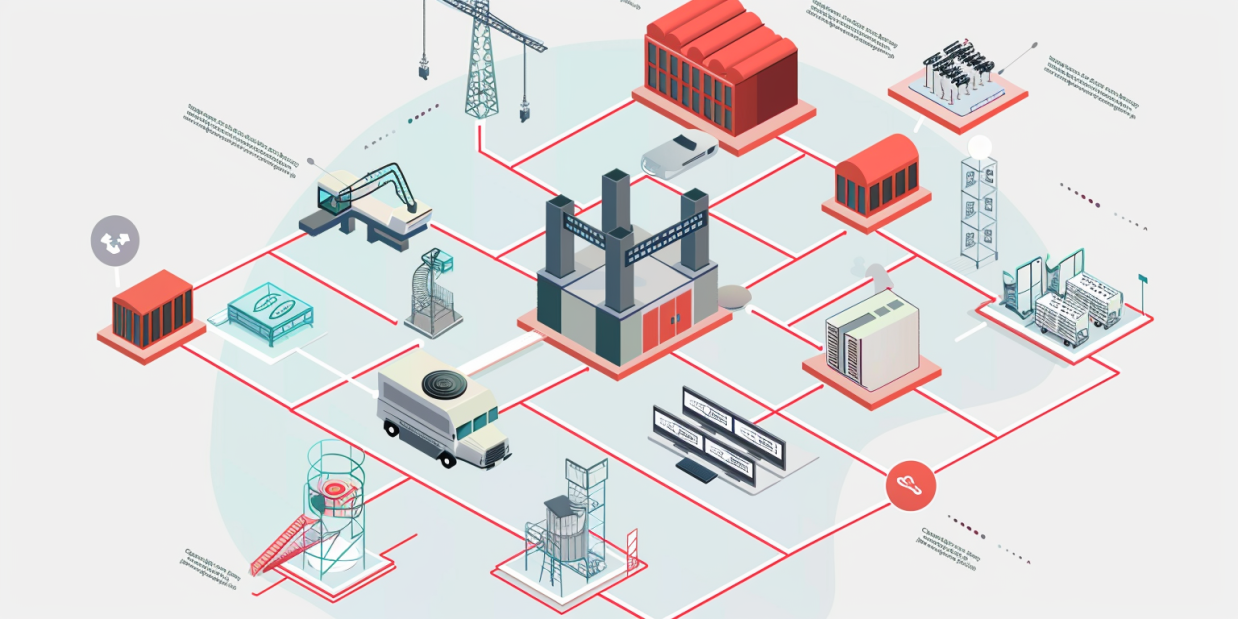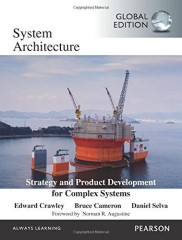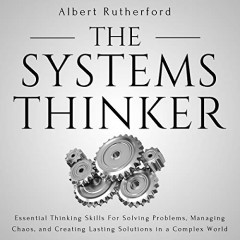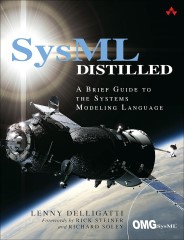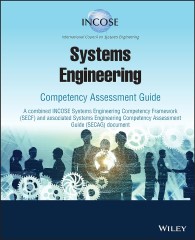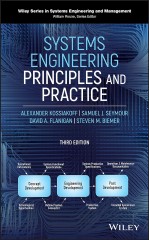In the complex world of systems engineering and project management, having a clear vision of how a system or project will operate is crucial. This is where the Concept of Operations, commonly known as CONOPS, comes into play. CONOPS is a powerful tool that bridges the gap between stakeholder expectations and the technical realities of system development.
CONOPS, at its core, is a document that describes how a system will be used from the user’s perspective. It outlines the system’s characteristics, operational scenarios, and expected interactions with users and other systems. But CONOPS is more than just a document – it’s a strategic approach to ensuring that all stakeholders are aligned on the project’s goals and operational requirements.
The importance of CONOPS in systems engineering and project management cannot be overstated. It serves as a north star, guiding decision-making throughout the project lifecycle. From initial concept development to system deployment and beyond, a well-crafted CONOPS helps teams stay focused on user needs and operational objectives.
In this article, we’ll explore real-world examples of CONOPS in action across various industries, delve into best practices for developing effective CONOPS, and look at emerging trends that are shaping the future of this critical systems engineering tool.
Recommended Further Reading Amazon BooksTable of Contents
- 1. Understanding CONOPS
- 2. Real-World Examples of CONOPS
- 3. How to Write a Concept of Operations (CONOPS)
- 4. Best Practices for Developing CONOPS
- 5. Common Pitfalls and How to Avoid Them
- 5.1. Lack of Stakeholder Input
- 5.2. Overly Technical Language
- 5.3. Failure to Update CONOPS Throughout Project Lifecycle
- 5.4. Lack of Specificity in Operational Scenarios
- 5.5. Misalignment with Other Project Documents
- 5.6. Ignoring Human Factors and Usability
- 5.7. Overlooking Security and Safety Considerations
- 5.8. Scope Creep in CONOPS Development
- 6. Tools and Techniques for CONOPS Development
- 7. Measuring the Success of CONOPS Implementation
- 8. Future Trends in CONOPS Development
- 9. CONOPS Standards & Specifications
- 10. Conclusion
1. Understanding CONOPS
Before we dive into examples and best practices, let’s take a closer look at what makes up a CONOPS and how it fits into the broader project lifecycle.
Key Components of a CONOPS Document
A comprehensive CONOPS typically includes the following elements:
- System Overview: A high-level description of the system, its purpose, and its operational environment.
- Operational Scenarios: Detailed descriptions of how the system will be used in various situations, including normal operations, edge cases, and potential failure modes.
- User Profiles: Characterizations of the different types of users who will interact with the system, including their roles, responsibilities, and needs.
- System Capabilities: A clear articulation of what the system is expected to do, often described in terms of functional and non-functional requirements.
- Operational Processes: Step-by-step descriptions of how users will interact with the system to accomplish specific tasks or missions.
- Support Concept: An overview of how the system will be maintained, updated, and supported throughout its lifecycle.
- Performance Metrics: Key indicators that will be used to measure the system’s effectiveness and efficiency in meeting operational goals.
The Role of CONOPS in the Project Lifecycle
CONOPS plays a critical role throughout the entire project lifecycle:
- Concept Development: In the early stages, CONOPS helps stakeholders align on the vision for the system and its operational context.
- Requirements Definition: The CONOPS informs the development of system requirements, ensuring they are grounded in operational needs.
- Design and Development: Engineers and developers refer to the CONOPS to ensure their technical solutions align with the intended operational use.
- Testing and Validation: The operational scenarios described in the CONOPS form the basis for system testing and acceptance criteria.
- Deployment and Operations: The CONOPS guides the implementation of the system in its intended operational environment.
- Maintenance and Evolution: As the system evolves, the CONOPS is updated to reflect changes in operational needs or capabilities.
By providing a clear and shared understanding of how a system will operate, CONOPS becomes an invaluable tool for communication among stakeholders, from end-users to engineers to project managers. It helps prevent misunderstandings, reduces the risk of scope creep, and ensures that the final system meets the actual needs of its users.
In the following sections, we’ll explore how CONOPS is applied in various industries, examine best practices for developing effective CONOPS, and look at some common pitfalls to avoid. Whether you’re new to CONOPS or looking to refine your approach, this guide will provide valuable insights into this crucial aspect of systems engineering and project management.
ConOps vs OpsCon: Understanding the Distinction
While often confused, Concept of Operations (ConOps) and Operational Concept (OpsCon) serve different purposes in systems engineering, though they are complementary.
Key Differences
| Characteristic | ConOps | OpsCon |
|---|---|---|
| Purpose | Describes how a system will be used from the user’s perspective | Details how a system will function and be operated |
| Focus | User needs, scenarios, and operational environment | Technical operations, system capabilities, and functional requirements |
| Audience | Stakeholders, decision-makers, and end users | System developers, operators, and technical teams |
| Timing | Early in project lifecycle, before detailed design | During system development, alongside requirements |
| Content Level | High-level, mission-oriented description | Detailed operational and functional description |
| Primary Use | Strategic planning and stakeholder alignment | Technical guidance and system development |
Relationship
Think of ConOps as the “what and why” document that describes the mission and user needs, while OpsCon is the “how” document that details system operation. ConOps typically informs the development of OpsCon, creating a natural progression from user needs to system implementation.
Usage Example
For an air traffic control system:
- ConOps would describe how controllers will manage traffic flow, coordinate with pilots, and handle various scenarios
- OpsCon would detail the technical operation of the system components, data flows, and specific operational procedures
This distinction helps ensure proper document development and usage in your systems engineering projects.
2. Real-World Examples of CONOPS
To truly understand the power and versatility of CONOPS, let’s explore how it’s applied across various industries. These case studies demonstrate how CONOPS can be adapted to meet diverse operational needs and challenges.

2.1. Aerospace Industry: NASA Mars Exploration Program
The NASA Mars Exploration Program provides an excellent example of CONOPS in action within the aerospace industry. The complexity of Mars missions, from rover deployments to sample return missions, requires meticulous planning and coordination.
Case Study: Mars 2020 Mission
For the Mars 2020 mission, which included the Perseverance rover and Ingenuity helicopter, NASA developed a comprehensive CONOPS that outlined:
- Mission objectives and success criteria
- Detailed landing sequence and contingency plans
- Operational scenarios for the rover’s scientific investigations
- Communication protocols between Earth and Mars
- Procedures for collecting and caching Martian samples
The CONOPS helped ensure that all team members, from mission control to scientific investigators, had a clear understanding of how the mission would unfold. It also provided a framework for addressing unexpected challenges, such as adjusting the rover’s route based on new geological findings.
2.2. Military and Defense: Unmanned Aerial Vehicle (UAV) Deployment
In the military sector, CONOPS plays a crucial role in planning and executing complex operations. The deployment of Unmanned Aerial Vehicles (UAVs) offers a prime example of how CONOPS is used in defense applications.
Case Study: Tactical UAV Reconnaissance Mission
For a tactical UAV reconnaissance mission, a CONOPS might include:
- Mission objectives and intelligence requirements
- UAV launch and recovery procedures
- Flight paths and altitude restrictions
- Data collection and transmission protocols
- Coordination with ground forces and other air assets
- Rules of engagement and contingency plans
By detailing these elements in the CONOPS, military planners ensure that UAV operators, intelligence analysts, and ground forces all have a shared understanding of how the mission will be conducted. This alignment is crucial for mission success and operational safety.
2.3. Transportation Systems: Smart City Traffic Management
As cities grow and traffic congestion becomes an increasingly pressing issue, many urban areas are turning to smart traffic management systems. CONOPS plays a vital role in planning and implementing these complex, interconnected systems.
Case Study: Metropolitan Smart Traffic System
A CONOPS for a smart city traffic management system might encompass:
- System architecture and component integration
- Data collection methods (e.g., sensors, cameras, GPS)
- Real-time traffic flow optimization algorithms
- Integration with public transportation systems
- Emergency response protocols
- User interfaces for traffic operators and the public
The CONOPS would detail how these various elements work together to reduce congestion, improve safety, and enhance overall urban mobility. It would also outline how the system adapts to different scenarios, such as rush hour traffic, major events, or emergencies.
2.4. Healthcare: Hospital Emergency Response System
In healthcare, CONOPS is crucial for planning and implementing systems that can respond effectively to various scenarios, including emergencies and public health crises.
Case Study: Hospital Mass Casualty Incident Response
A hospital’s CONOPS for responding to a mass casualty incident might include:
- Activation protocols and communication channels
- Triage procedures and patient flow management
- Resource allocation and staff deployment plans
- Integration with external emergency services
- Data management and patient tracking systems
- Deactivation and recovery procedures
This CONOPS would ensure that all hospital staff, from administrators to healthcare providers, understand their roles and responsibilities during a crisis. It would also facilitate coordination with external agencies and help maintain order in chaotic situations.
These examples demonstrate how CONOPS is adapted across different industries to address unique operational challenges. Whether it’s exploring another planet, conducting military operations, managing urban traffic, or responding to healthcare emergencies, CONOPS provides a structured approach to planning and executing complex systems and operations.
Recommended Further Reading Amazon Books3. How to Write a Concept of Operations (CONOPS)
A Concept of Operations (CONOPS) document is fundamental to system development, serving as a bridge between stakeholder needs and technical implementation. This guide will walk you through the process of creating an effective CONOPS document, especially if you’re new to the field.
Basic Structure of a CONOPS
Essential Components
The development of a CONOPS document follows three major phases, each building upon the previous to create a comprehensive and effective document. Understanding each phase and its components helps ensure nothing is overlooked in your CONOPS development.
3.1 Preparation Phase
Information Gathering
Begin by conducting thorough stakeholder interviews to understand their needs, perspectives, and concerns. These conversations should explore both current operations and desired future states. Review existing system documentation and study similar systems in use elsewhere. Your research should build a complete picture of the operational environment and user requirements. Document your findings systematically, as they’ll form the foundation of your CONOPS.
Scope Definition
Work with stakeholders to establish clear system boundaries and operational timeframes. Define the context in which the system will operate, including any external interfaces or dependencies. Document all assumptions and constraints that will influence system operation. A well-defined scope prevents feature creep and helps maintain focus on essential elements. Be sure to get stakeholder agreement on the scope before proceeding further.
3.2 Development Phase
Document Structure
Create an outline that follows your organization’s standards while maintaining a logical flow of information. Your structure should progress from high-level concepts to specific details. Include sections for system overview, operational scenarios, user roles, and system capabilities. This outline serves as your roadmap for content development and ensures comprehensive coverage of all necessary topics.
Scenario Development
Write detailed operational scenarios that describe how the system will be used in real-world situations. Start with normal operations, then expand to cover exceptional cases and potential failure modes. Write from the user’s perspective, describing step-by-step interactions with the system. Include timing considerations, decision points, and expected outcomes. These scenarios help stakeholders visualize the system in operation and identify potential issues early.
Requirements Documentation
As you develop scenarios, identify and document specific system capabilities needed to support them. Write clear, measurable requirements that focus on what the system must do rather than how it will do it. Ensure each requirement traces back to operational needs or scenarios you’ve described. Include performance requirements, interface requirements, and any constraints the system must observe.
3.3 Review and Refinement Phase
Internal Review
Begin with technical reviews focusing on accuracy, completeness, and consistency. Have subject matter experts examine your scenarios and requirements for feasibility. Look for gaps in logic or missing capabilities. Document all feedback systematically and maintain a clear record of revisions and their rationale.
Stakeholder Validation
Present the CONOPS to users, operators, and management for review and approval. Walk through scenarios to ensure they accurately represent intended operations. Be prepared to incorporate feedback and make adjustments as needed. Remember that stakeholder buy-in is crucial for the CONOPS’s success in guiding system development.
Final Refinement
Integrate all feedback and revisions into a cohesive final document. Ensure all sections align and cross-references remain accurate. Review the document for clarity and completeness one final time. Prepare the document for formal approval and distribution according to your organization’s procedures.
Throughout all phases, maintain open communication with stakeholders and the development team. Regular check-ins help ensure the document stays aligned with expectations and goals. While these phases are presented sequentially, don’t hesitate to revisit earlier phases if new information emerges or requirements evolve. This iterative approach produces a more robust and useful final document.
3.4 Writing Tips for Beginners
The following table provides essential writing tips and guidelines for those new to creating CONOPS documents. It outlines key principles, common mistakes to avoid, and practical strategies for success.
| Area | Key Principles | Do’s | Don’ts | Examples |
|---|---|---|---|---|
| Language Usage | Clear, precise communication is essential | • Use active voice • Define technical terms • Write concise sentences • Use consistent terminology | • Avoid jargon without definition • Don’t use passive voice • Avoid ambiguous terms • Don’t use colloquialisms | Good: “Operators will review alerts hourly” Bad: “Alerts should be looked at when they come in” |
| User Focus | Keep the end user in mind | • Describe from user perspective • Include all user types • Address user concerns • Consider user capabilities | • Don’t assume technical knowledge • Don’t ignore user limitations • Don’t skip user scenarios • Don’t use developer terminology | Good: “The dispatcher selects a flight from the list” Bad: “The system processes the flight object” |
| Document Structure | Maintain logical flow and organization | • Use consistent formatting • Include clear headings • Provide transitions • Number sections logically | • Don’t mix formats • Don’t skip section numbers • Don’t change styles • Don’t use inconsistent headers | Good: “2.1 System Overview” Bad: “System Overview Part A” |
| Requirements Writing | Be specific and measurable | • Use “shall” statements • Include metrics • Be specific • State requirements clearly | • Don’t use vague terms • Don’t mix requirements • Don’t use “should/may” • Don’t omit criteria | Good: “System shall respond within 3 seconds” Bad: “System should be fast” |
| Graphics and Diagrams | Visual elements should add value | • Label all elements • Use consistent styles • Include captions • Reference in text | • Don’t use decorative graphics • Don’t leave items unlabeled • Don’t skip explanations • Don’t use complex diagrams | Good: “Figure 1: User Authentication Flow” Bad: Unlabeled flowchart |
| Content Depth | Provide appropriate level of detail | • Include necessary context • Explain key concepts • Support claims with data • Use examples | • Don’t over-explain basics • Don’t skip vital details • Don’t assume knowledge • Don’t generalize | Good: “The backup system activates within 50ms” Bad: “The backup works quickly” |
| Review and Editing | Ensure quality and accuracy | • Review for clarity • Check consistency • Verify references • Proofread thoroughly | • Don’t skip peer review • Don’t ignore feedback • Don’t rush editing • Don’t skip verification | Good: Multiple review cycles with feedback Bad: Single quick review |
3.5 Quality Checklist
Before Finalizing
- All sections complete
- Stakeholder reviews done
- Terms defined
- Scenarios validated
- Requirements clear
- Graphics included
- References cited
- Format consistent
- Grammar checked
- Version controlled
3.6 Final Review Questions
- Does the document clearly explain the operational concept?
- Are all stakeholder needs addressed?
- Are scenarios realistic and complete?
- Are requirements clear and measurable?
- Is the language appropriate for all readers?
- Are graphics clear and relevant?
- Is the structure logical and easy to follow?
- Are all terms properly defined?
- Are all references properly cited?
- Has everyone necessary reviewed the document?
Writing a CONOPS document may seem daunting at first, but following this structured approach will help ensure you create a comprehensive and useful document. Remember that a CONOPS is a living document that will evolve as your understanding of the system grows and stakeholder needs change.
4. Best Practices for Developing CONOPS
Creating an effective Concept of Operations (CONOPS) is both an art and a science. It requires a deep understanding of the system, its users, and its operational environment. Here are some best practices to guide you in developing a comprehensive and useful CONOPS:
4.1. Stakeholder Engagement
One of the most critical aspects of developing an effective CONOPS is ensuring comprehensive stakeholder engagement throughout the process.
- Identify All Relevant Stakeholders: This includes end-users, system operators, maintenance personnel, management, and any other groups that will interact with or be affected by the system.
- Conduct Stakeholder Interviews: Gather insights about operational needs, challenges, and expectations directly from those who will use or be impacted by the system.
- Facilitate Workshops: Organize collaborative sessions where stakeholders can discuss and align on key operational concepts.
- Iterative Review Process: Regularly share drafts of the CONOPS with stakeholders for feedback and refinement.
Remember, the goal is to create a shared vision that all stakeholders can support and understand.
4.2. Clear and Concise Documentation
A CONOPS document should be accessible and understandable to all stakeholders, not just technical experts.
- Use Plain Language: Avoid jargon and technical terms where possible. When specialized terms are necessary, provide clear definitions.
- Employ Visual Aids: Use diagrams, flowcharts, and other visual representations to illustrate complex concepts or processes.
- Structure for Readability: Use a logical, hierarchical structure with clear headings and subheadings to make the document easy to navigate.
- Executive Summary: Include a concise overview that captures the essence of the CONOPS for quick reference.
4.3. Scenario-Based Planning
Developing detailed operational scenarios is crucial for a comprehensive CONOPS.
- Cover a Range of Scenarios: Include normal operations, edge cases, and potential failure modes.
- Use Storytelling Techniques: Present scenarios as narratives to make them more engaging and easier to understand.
- Include Time Elements: Specify how the system will operate over time, including startup, steady-state operations, and shutdown procedures.
- Consider External Factors: Incorporate how the system will interact with its environment and other systems.
4.4. Iterative Development
CONOPS development should be an iterative process, evolving as the project progresses and more information becomes available.
- Start Early: Begin developing the CONOPS in the early stages of the project, even if all details aren’t known.
- Regular Updates: Revise the CONOPS as the project evolves and new insights are gained.
- Version Control: Maintain clear versioning of the CONOPS document to track changes over time.
- Feedback Loop: Establish a mechanism for continuous feedback from stakeholders and the development team.
4.5. Integration with Systems Engineering Processes
Ensure that the CONOPS development is tightly integrated with other systems engineering processes.
- Align with Requirements: Use the CONOPS to inform and validate system requirements.
- Support Design Decisions: Reference the CONOPS when making key design choices to ensure alignment with operational needs.
- Inform Testing: Use operational scenarios from the CONOPS to develop test cases and acceptance criteria.
- Link to Other Documents: Establish clear traceability between the CONOPS and other project documents like the System Requirements Specification (SRS) and System Design Document (SDD).
4.6. Focus on Usability and Human Factors
Remember that the ultimate goal of most systems is to serve human needs effectively.
- User-Centered Design: Keep the end-users at the forefront of your thinking when developing the CONOPS.
- Consider Ergonomics: Address how users will physically interact with the system, especially for systems with hardware components.
- Cognitive Load: Consider the mental demands placed on users and operators, aiming to minimize complexity where possible.
- Training Needs: Outline any specific training or skills users will need to operate the system effectively.
4.7. Address Security and Safety
In today’s interconnected world, security and safety considerations are paramount.
- Threat Modeling: Include potential security threats and mitigation strategies in your operational scenarios.
- Safety Protocols: Clearly define safety procedures, especially for systems where human safety could be at risk.
- Compliance: Ensure the CONOPS addresses relevant regulatory requirements and industry standards.
| Best Practice | Description | Key Actions |
|---|---|---|
| Stakeholder Engagement | Involve all relevant parties throughout the process | • Identify all stakeholders • Conduct interviews • Facilitate workshops • Implement iterative review process |
| Clear and Concise Documentation | Make the document accessible to all stakeholders | • Use plain language • Employ visual aids • Structure for readability • Include an executive summary |
| Scenario-Based Planning | Develop detailed operational scenarios | • Cover a range of scenarios • Use storytelling techniques • Include time elements • Consider external factors |
| Iterative Development | Evolve the CONOPS as the project progresses | • Start early • Update regularly • Maintain version control • Establish feedback loops |
| Integration with Systems Engineering | Align CONOPS with other engineering processes | • Align with requirements • Support design decisions • Inform testing • Link to other documents |
| Focus on Usability and Human Factors | Keep end-users at the forefront | • Apply user-centered design • Consider ergonomics • Minimize cognitive load • Address training needs |
| Address Security and Safety | Include critical protective measures | • Perform threat modeling • Define safety protocols • Ensure regulatory compliance |
| Use Templates and Standards | Leverage existing resources | • Adopt industry-specific templates • Follow relevant standards (e.g., ISO/IEC/IEEE 29148) |
| Quantify Performance Expectations | Define measurable criteria | • Set clear KPIs • Define success metrics • Establish performance thresholds |
| Consider Lifecycle Aspects | Address all stages of system life | • Include maintenance procedures • Plan for upgrades and updates • Consider disposal/decommissioning |
By following these best practices, you can develop a CONOPS that not only serves as a valuable planning tool but also as a living document that guides the project throughout its lifecycle. Remember, a well-crafted CONOPS is an investment that pays dividends in improved system design, smoother operations, and better alignment among all stakeholders.
5. Common Pitfalls and How to Avoid Them
While developing a Concept of Operations (CONOPS) is crucial for project success, there are several common pitfalls that teams may encounter. Being aware of these challenges and knowing how to address them can significantly improve the quality and effectiveness of your CONOPS. Let’s explore some of these pitfalls and discuss strategies to avoid them.
5.1. Lack of Stakeholder Input
Pitfall: One of the most critical mistakes in CONOPS development is failing to gather input from all relevant stakeholders. This can lead to a document that doesn’t accurately represent the needs and expectations of those who will interact with the system.
How to Avoid:
- Conduct a thorough stakeholder analysis at the project’s outset
- Use multiple methods for gathering input (interviews, surveys, workshops)
- Create a stakeholder engagement plan with regular touchpoints throughout the CONOPS development process
- Implement a formal review and feedback cycle for all stakeholders
5.2. Overly Technical Language
Pitfall: Using highly technical jargon or complex language can make the CONOPS difficult to understand for non-technical stakeholders, leading to misunderstandings and misalignment.
How to Avoid:
- Write in plain, accessible language
- Define technical terms clearly when they must be used
- Use analogies and real-world examples to explain complex concepts
- Have non-technical stakeholders review the document for clarity
5.3. Failure to Update CONOPS Throughout Project Lifecycle
Pitfall: Treating the CONOPS as a one-time document rather than a living guide can result in it becoming outdated and irrelevant as the project evolves.
How to Avoid:
- Establish a regular review and update schedule for the CONOPS
- Align CONOPS updates with major project milestones or phase transitions
- Implement version control to track changes over time
- Assign responsibility for maintaining and updating the CONOPS to a specific team member or role
5.4. Lack of Specificity in Operational Scenarios
Pitfall: Vague or overly generalized operational scenarios can lead to ambiguity in system requirements and design decisions.
How to Avoid:
- Develop detailed, specific scenarios that cover a range of operational conditions
- Include quantitative metrics and performance expectations in scenarios
- Use storytelling techniques to make scenarios more engaging and relatable
- Validate scenarios with end-users and subject matter experts
5.5. Misalignment with Other Project Documents
Pitfall: When the CONOPS is not well-integrated with other project documents (like requirements specifications or design documents), it can lead to inconsistencies and conflicts.
How to Avoid:
- Establish clear traceability between the CONOPS and other project documents
- Use consistent terminology across all project documentation
- Conduct regular cross-document reviews to ensure alignment
- Implement a change management process that considers impacts across all related documents
5.6. Ignoring Human Factors and Usability
Pitfall: Focusing solely on technical and functional aspects while neglecting human factors and usability can result in systems that are difficult or frustrating to use.
How to Avoid:
- Include human factors and usability experts in the CONOPS development process
- Conduct user research to understand the needs, preferences, and limitations of end-users
- Incorporate usability scenarios and metrics into the CONOPS
- Consider ergonomics and cognitive load in operational descriptions
5.7. Overlooking Security and Safety Considerations
Pitfall: Failing to adequately address security and safety aspects in the CONOPS can lead to vulnerabilities and risks in the final system.
How to Avoid:
- Include security and safety experts in the CONOPS development process
- Conduct threat modeling and risk assessments as part of scenario development
- Explicitly address security and safety requirements in operational descriptions
- Ensure compliance with relevant industry standards and regulations
5.8. Scope Creep in CONOPS Development
Pitfall: Allowing the scope of the CONOPS to expand unchecked can lead to an overly complex document that loses focus on core operational concepts.
How to Avoid:
- Clearly define the boundaries and objectives of the CONOPS at the outset
- Regularly review and validate the CONOPS content against its defined scope
- Implement a change control process for adding new content to the CONOPS
- Focus on essential operational concepts and defer detailed design decisions to other documents
By being aware of these common pitfalls and implementing strategies to avoid them, you can develop a more effective and useful CONOPS. Remember, the goal is to create a clear, comprehensive, and living document that guides the project from concept to reality, aligning all stakeholders around a shared vision of how the system will operate in the real world.
6. Tools and Techniques for CONOPS Development
Developing an effective Concept of Operations (CONOPS) requires not only a solid understanding of best practices but also the right tools and techniques. The following table provides an overview of various methods and technologies that can enhance your CONOPS development process. Each tool or technique is presented with its key benefits, popular software options, and best practices for implementation.
| Tool/Technique | Key Benefits | Popular Tools | Best Practices |
|---|---|---|---|
| Modeling and Simulation | • Visualizes system behavior • Identifies potential issues • Supports “what-if” analysis | • MATLAB/Simulink • AnyLogic • Arena Simulation Software | • Start with simple models • Validate assumptions with experts • Use results to refine scenarios |
| Use Case Diagrams | • Depicts system-user interactions • Identifies relevant actors • Supports scenario development | • Lucidchart • Visual Paradigm • Draw.io | • Focus on high-level use cases • Include alternative flows • Use consistent naming conventions |
| Storyboarding | • Makes concepts tangible • Encourages creative thinking • Communicates ideas to non-technical stakeholders | • Storyboarder • Boords • PowerPoint/Google Slides | • Use mix of visuals and text • Focus on key decision points • Involve end-users in reviews |
| Requirements Management | • Ensures alignment with system requirements • Supports impact analysis • Facilitates requirements validation | • IBM DOORS • Jama Connect • ReqSuite | • Establish clear links to requirements • Use consistent terminology • Regularly review and update links |
| Collaboration and Version Control | • Facilitates stakeholder input • Maintains change history • Supports concurrent work | • Google Docs • Microsoft SharePoint • Git-based systems (GitHub, GitLab) | • Establish clear editing protocols • Use commenting for feedback • Create regular document snapshots |
| Mind Mapping | • Visualizes relationships between concepts • Supports non-linear thinking • Useful for creating outlines | • MindMeister • XMind • Coggle | • Start with high-level concepts • Use color coding and icons • Export to other formats for inclusion |
| Flowcharting | • Illustrates process flows • Clarifies decision points • Helps identify bottlenecks | • Microsoft Visio • Lucidchart • draw.io | • Use standard flowchart symbols • Keep diagrams simple and focused • Validate flows with stakeholders |
| Prototyping | • Provides tangible representation of concepts • Allows early user feedback • Helps refine user interface designs | • Figma • Adobe XD • Axure RP | • Start with low-fidelity prototypes • Focus on key user interactions • Iterate based on user feedback |
By leveraging these tools and techniques, you can streamline your CONOPS development process, improve stakeholder engagement, and create a more comprehensive and effective document. Remember to choose tools that best fit your project’s needs and your team’s capabilities. Don’t be afraid to experiment with different approaches to find what works best for your specific context.
7. Measuring the Success of CONOPS Implementation
A well-crafted Concept of Operations (CONOPS) is crucial for guiding system development, but its true value is realized when the system is implemented and operational. Measuring the success of CONOPS implementation is essential to ensure that the operational vision aligns with reality and to identify areas for improvement. This section explores key approaches to evaluating CONOPS effectiveness.
7.1. Key Performance Indicators (KPIs)
KPIs are quantifiable measures that help assess how well the implemented system meets the operational goals outlined in the CONOPS.
Selecting Appropriate KPIs:
- Align KPIs with the operational objectives stated in the CONOPS
- Ensure KPIs are SMART (Specific, Measurable, Achievable, Relevant, Time-bound)
- Include a mix of leading and lagging indicators
Examples of KPIs:
- System Availability: Percentage of time the system is operational
- Response Time: Average time to complete key operational tasks
- Error Rate: Frequency of operational errors or exceptions
- User Adoption: Percentage of intended users actively using the system
- Cost Efficiency: Operational costs compared to predefined benchmarks
Best Practices:
- Establish baseline measurements before system implementation
- Regularly collect and analyze KPI data
- Use visualizations (e.g., dashboards) to communicate KPI status effectively
- Review and adjust KPIs as the operational environment evolves
7.2. User Feedback and Acceptance
User satisfaction and acceptance are critical indicators of CONOPS success, as they reflect how well the implemented system meets user needs and expectations.
Methods for Gathering User Feedback:
- Surveys: Structured questionnaires to collect quantitative and qualitative feedback
- Interviews: In-depth discussions with key users or user groups
- Focus Groups: Facilitated group discussions to explore user experiences
- Observational Studies: Direct observation of users interacting with the system
- System Usage Analytics: Analysis of user interaction data
Key Aspects to Evaluate:
- Ease of Use: How intuitive and user-friendly is the system?
- Functionality: Does the system provide all necessary features?
- Efficiency: Does the system improve user productivity?
- Training Adequacy: Were users sufficiently prepared to operate the system?
- Overall Satisfaction: How well does the system meet user expectations?
Best Practices:
- Collect feedback at regular intervals post-implementation
- Use a mix of quantitative and qualitative feedback methods
- Act on user feedback to continuously improve the system
- Communicate improvements back to users to maintain engagement
7.3. Operational Scenario Validation
Comparing actual system performance against the operational scenarios described in the CONOPS provides valuable insights into the accuracy and completeness of the original operational concept.
Validation Approach:
- Identify key operational scenarios from the CONOPS
- Design tests or exercises to replicate these scenarios in the live environment
- Execute the tests and collect performance data
- Compare actual performance with expected outcomes described in the CONOPS
Areas to Evaluate:
- Workflow Accuracy: Do actual workflows match those described in the CONOPS?
- System Interactions: Do system components interact as anticipated?
- Performance Metrics: Does the system meet performance expectations outlined in scenarios?
- Exception Handling: How well does the system handle unexpected situations?
Best Practices:
- Involve both system operators and CONOPS authors in the validation process
- Use a combination of routine and edge-case scenarios
- Document discrepancies between actual performance and CONOPS descriptions
- Use validation results to update and refine the CONOPS
7.4. Continuous Improvement Process
Implementing a continuous improvement process ensures that the CONOPS remains relevant and continues to guide system enhancements.
Key Elements:
- Regular Review Cycles: Schedule periodic reviews of the CONOPS against actual system performance
- Feedback Integration: Establish a process for incorporating user feedback and operational insights into CONOPS updates
- Change Management: Implement a structured approach for proposing, evaluating, and implementing changes to the system based on CONOPS evolution
- Knowledge Sharing: Create mechanisms for sharing lessons learned and best practices across the organization
Best Practices:
- Assign clear ownership for the continuous improvement process
- Engage stakeholders from various roles (e.g., users, operators, maintainers) in improvement discussions
- Use data-driven decision making when prioritizing improvements
- Maintain version control for CONOPS updates and link them to system changes
By implementing these measurement and evaluation strategies, organizations can ensure that their CONOPS remains a living document that accurately reflects and guides system operations. Regular assessment and refinement of the CONOPS based on real-world performance data and user feedback are key to maximizing the long-term value of both the CONOPS and the system it describes.
Recommended Future Learn Short Courses8. Future Trends in CONOPS Development
As technology evolves and systems become increasingly complex, the approach to developing and utilizing Concept of Operations (CONOPS) documents is also advancing. This section explores emerging trends that are shaping the future of CONOPS development and implementation.
8.1. Integration with Model-Based Systems Engineering (MBSE)
Model-Based Systems Engineering is gaining traction as a comprehensive approach to system development, and CONOPS is becoming an integral part of this methodology.
Key Developments:
- CONOPS as a Model: Moving from document-centric to model-centric CONOPS representation.
- Executable CONOPS: Creating models that can be simulated to validate operational concepts dynamically.
- Traceability: Establishing direct links between CONOPS elements and other system models (requirements, architecture, etc.).
Potential Benefits:
- Improved consistency between CONOPS and system design
- More efficient updates and change management
- Enhanced ability to analyze operational impacts of design changes
Challenges:
- Requiring new skills and tools for CONOPS developers
- Ensuring models remain accessible to non-technical stakeholders
- Standardizing CONOPS modeling approaches across the industry
8.2. AI and Machine Learning in CONOPS Analysis
Artificial Intelligence (AI) and Machine Learning (ML) are beginning to play a role in developing and analyzing CONOPS.
Emerging Applications:
- Scenario Generation: Using AI to generate a wide range of operational scenarios for consideration.
- Natural Language Processing: Analyzing existing CONOPS documents to extract key information and check for inconsistencies.
- Predictive Analytics: Forecasting system performance based on CONOPS models and historical data.
Potential Benefits:
- More comprehensive coverage of potential operational scenarios
- Faster identification of conflicts or gaps in operational concepts
- Data-driven refinement of operational strategies
Challenges:
- Ensuring transparency and explainability of AI-generated content
- Balancing AI-driven insights with human expertise and intuition
- Managing the quality and biases in training data for AI/ML models
8.3. Virtual and Augmented Reality in CONOPS Visualization
As VR and AR technologies mature, they’re opening new possibilities for visualizing and validating operational concepts.
Innovative Uses:
- Immersive Scenario Walkthroughs: Allowing stakeholders to experience operational concepts in a virtual environment.
- AR-Enhanced Training: Using AR to overlay CONOPS information on real-world systems during operator training.
- Collaborative Virtual Environments: Enabling geographically dispersed teams to collaboratively develop and review CONOPS in shared virtual spaces.
Potential Benefits:
- More intuitive understanding of complex operational concepts
- Enhanced stakeholder engagement and buy-in
- Improved ability to identify potential issues in human-system interactions
Challenges:
- Ensuring VR/AR representations accurately reflect real-world operations
- Managing the cost and technical requirements of VR/AR implementations
- Addressing potential health and safety concerns with prolonged VR use
8.4. Agile and Iterative CONOPS Development
As more organizations adopt agile methodologies, CONOPS development is becoming more iterative and flexible.
Key Shifts:
- Living CONOPS: Treating CONOPS as a continuously evolving artifact rather than a static document.
- Incremental Development: Creating minimum viable CONOPS and iteratively expanding based on feedback and changing needs.
- Cross-Functional Collaboration: Involving diverse stakeholders throughout the CONOPS lifecycle.
Potential Benefits:
- Faster adaptation to changing operational requirements
- Better alignment between CONOPS and agile development cycles
- Increased stakeholder engagement throughout the system lifecycle
Challenges:
- Maintaining consistency and traceability across multiple CONOPS iterations
- Balancing agility with the need for stable operational guidelines
- Ensuring all stakeholders can keep up with rapid CONOPS evolution
8.5. Integration of Human-AI Teaming Concepts
As AI systems become more prevalent, CONOPS will need to address the complexities of human-AI collaboration.
Emerging Considerations:
- Role Allocation: Clearly defining and dynamically adjusting roles between human operators and AI systems.
- Trust Calibration: Addressing how human operators can develop appropriate levels of trust in AI teammates.
- Ethical Decision-Making: Incorporating guidelines for ethical considerations in AI-assisted operations.
Potential Benefits:
- More effective utilization of both human and AI capabilities
- Improved operational resilience through complementary strengths
- Clearer guidelines for responsible AI integration in critical systems
Challenges:
- Addressing the complexity of dynamic human-AI interactions
- Ensuring CONOPS can adapt to rapidly evolving AI capabilities
- Navigating regulatory and ethical considerations of AI in various domains
As these trends continue to evolve, CONOPS developers and users will need to adapt their skills and approaches. Embracing these innovations can lead to more dynamic, comprehensive, and effective operational concepts, ultimately resulting in better-designed and more successful systems. However, it’s crucial to balance the adoption of new technologies and methodologies with the fundamental purpose of CONOPS: to clearly communicate operational intent and guide system development and use.
9. CONOPS Standards & Specifications
The field of CONOPS is governed by various standards and regulatory frameworks across different regions of the world. While this section provides a comprehensive overview of key standards, it’s crucial to note that standards and regulations are continuously evolving. Organizations should always verify the current status, version, and applicability of any standard with their relevant regulatory authorities or standards bodies before implementation.
Many countries adopt and modify international standards (particularly ISO/IEC/IEEE) rather than developing completely independent ones. Additionally, industry-specific requirements may apply alongside these general standards. The following list represents major CONOPS-related standards grouped by global region as of early 2025:
GLOBAL/INTERNATIONAL
- ISO/IEC/IEEE 29148:2011 – Systems engineering — Life cycle processes — Requirements engineering
- ISO/IEC/IEEE 15288:2015 – Systems and software engineering — System life cycle processes
EUROPEAN UNION
- CEN EN 16271:2012 – Value Management and functional requirements
- EASA CS-25 – Aircraft certification specifications
- ESA ECSS-E-ST-10C – Space engineering requirements
- ERA EN 50126-1:2017 – Railway Applications RAMS
- ED-78A/DO-264 – Air Traffic Services requirements
NORTH AMERICA (USA)
- ANSI/AIAA G-043A-2012 – Aerospace CONOPS guide
- DoDAF – Defense Architecture Framework
- FAA-STD-025 – Air traffic operations
- NASA/SP-2016-6105 Rev 2 – Systems Engineering Handbook
- NIST SP 800-37 Rev. 2 – Information Systems Framework
- DHS 026-06-001 – Homeland Security Testing
- DOE O 413.3B – Energy Systems Management
ASIA-PACIFIC Australia/New Zealand:
- AS/NZS ISO/IEC/IEEE 15288:2015 – Systems engineering
- DCDH – Australian Defence Capability Development
- TS 01463:1.0 Transport for NSW Guide to Operational Concept Definition Development
Japan:
- JERG-0-018A – JAXA Space Systems
- JIS Q 15288:2015 – Industrial Standard
China:
- GB/T 8566-2007 – Software processes
- GJB 5000A-2008 – Military Software
Other Asian:
- SS ISO/IEC/IEEE 15288:2015 (Singapore)
- KS X ISO/IEC/IEEE 15288 (South Korea)
- IS/ISO/IEC/IEEE 15288:2015 (India)
- ISRO SED-12 (Indian Space Research)
It’s important to note that this list is not exhaustive, and additional standards may apply depending on:
- Specific industry requirements
- National or local regulations
- Project-specific needs
- Security classification levels
- Domain-specific requirements
- Commercial vs. government applications
Organizations should conduct thorough research and potentially seek expert guidance to ensure compliance with all applicable standards and regulations in their specific context. Regular review and updates of standards compliance should be part of any organization’s CONOPS development and maintenance process.
10. Conclusion
As we’ve explored throughout this article, the Concept of Operations (CONOPS) plays a crucial role in the successful development and implementation of complex systems across various industries. From aerospace and defense to healthcare and smart city management, CONOPS serves as a bridge between stakeholder expectations and technical realities, guiding projects from initial concept to operational reality.
Key Takeaways
- Comprehensive Approach: An effective CONOPS goes beyond mere technical specifications, encompassing the full operational context, user needs, and system interactions. It provides a holistic view of how a system will function in its intended environment.
- Stakeholder Alignment: By involving all relevant stakeholders in its development, CONOPS ensures that diverse perspectives are considered, leading to a shared vision and reduced risk of misalignment later in the project lifecycle.
- Living Document: The most effective CONOPS are treated as living documents, evolving alongside the system they describe. Regular updates and revisions ensure ongoing relevance and value.
- Best Practices: Following best practices such as clear documentation, scenario-based planning, and integration with systems engineering processes can significantly enhance the quality and usefulness of a CONOPS.
- Tools and Techniques: Leveraging appropriate tools and techniques, from modeling and simulation to storyboarding and prototyping, can greatly facilitate CONOPS development and improve its effectiveness.
- Measuring Success: Implementing robust methods for measuring CONOPS success, including KPIs, user feedback, and scenario validation, is crucial for ensuring that the operational vision translates into real-world benefits.
- Future Trends: Emerging trends such as integration with MBSE, AI-assisted analysis, and VR/AR visualization are set to transform CONOPS development, offering new opportunities for more dynamic and comprehensive operational planning.
Looking Ahead
As systems become increasingly complex and interconnected, the role of CONOPS in system development and operation will only grow in importance. The future of CONOPS development lies in embracing new technologies and methodologies while staying true to its core purpose: clearly communicating operational intent and guiding system development and use.
Developers and users of CONOPS should remain adaptable, continuously learning and incorporating new approaches as they emerge. This might involve upskilling in areas such as model-based systems engineering, AI and machine learning, or agile methodologies. At the same time, it’s crucial not to lose sight of the fundamental principles of good CONOPS development: clear communication, stakeholder engagement, and a focus on real-world operational needs.
Final Thoughts
A well-crafted CONOPS is more than just a document or a model—it’s a powerful tool for aligning vision, guiding development, and ensuring that systems meet their intended operational goals. By investing time and resources in developing comprehensive and effective CONOPS, organizations can significantly improve their chances of project success, reduce risks, and create systems that truly meet user needs.
As you apply the concepts, best practices, and tools discussed in this article to your own CONOPS development efforts, remember that the ultimate goal is to create systems that work effectively in the real world. Let your CONOPS be a living embodiment of that goal, evolving and improving as you gain new insights and face new challenges.
The future of CONOPS is bright, filled with opportunities for innovation and improvement. By staying informed about emerging trends and continuously refining our approaches, we can ensure that CONOPS remains a vital tool in the development of successful, user-centered systems for years to come.

